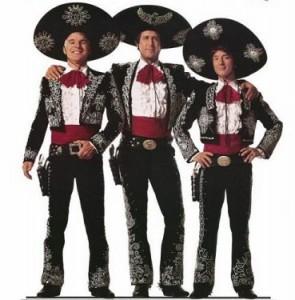By Lindsay Bell-Wheeler
Welcome to the 41st edition of The Three Things, the weekly update of three links, podcasts, videos, or books you can’t miss from Michael Schechter (Honora, A Better Mess), Howie Goldfarb (Blue Star Strategic Marketing), and yours truly, Lindsay Bell.
For those of you new to this series, The Three Things arrives in your inbox on Sunday mornings (unless you don’t suscribe, but that can easily be fixed if you hurry over and enter your email address or add to your RSS feed) so you have some extra time to spend perusing the obscure content we’ve curated for you (and one another) before your week begins and deadlines, meetings, and work takes over.
This week we take a look at quitting, swimming and water safety, and inherited diseases, genetics, and the Royal Family.
Michael on Quitting. It’s never easy to shelve a project or leave a job. It’s also not always something we handle in the best possible way. Far too often, quitting is a reaction rather than a decision. It’s an impulse, rather than a choice. Having recently decided to end a multi-year project, I find myself thinking about how we approach the act of deciding what we should no longer be doing. In many cases, it’s seen as the brave and gutsy thing to do. In others, it’s just an excuse not to do the hard work needed to accomplish your goals. If you struggle with this anywhere near as much as I do, you’ll find it well worth your time to read these thoughts from Gabe Weatherhead over at Macdrifter. It’s easily some of the best advice I’ve come across on the proper role that quitting should play in our lives.
How to Escape from a Car Underwater
Howie on Swimming. This is my Three Things PSA – I have a client in the pool industry. Through them I am involved with the National Drowning Prevention Alliance. The number one cause of accidental death for children younger than 14 is drowning. A toddler drowned in a bucket of water this summer in Australia. The recent ex-Auburn football player who drowned in the Gulf of Mexico disregarded beach danger flags. The best protection is to learn to swim. If Morgan Lake wasn’t a strong swimmer she wouldn’t be here today. And just in case, like her, you start out in your car underwater…..here is how to get out so you can swim to safety!
Haemophilia and Porphyria – Royal Diseases from Tainted Blood
Lindsay on Genetics and Royalty. Bonny Prince George has finally arrived! And the day Will and Kate released his royal moniker, I was reminded of an incredible documentary (below) I watched while on vacation a few weeks back. The story of Mad King George has been a successful play as well as a big-screen film – and no wonder – what a story it is! Heir to the throne at the tender age of 12, King George III was King of Great Britain and Ireland from 1760, and King of Hanover from 1814, until his death in 1820. Known as “the mad King who lost America,” his bouts of bizarre behavior are well documented. But was he indeed ‘mad’? This documentary says he wasn’t. Instead, he may have been a victim of the common practice among royals of intermarrying, to keep the royal blood lines – the blue blood, if you will – untainted by mere commoners. There is a lot more in this fascinating piece, and as a Royal Family geek (sorry Howie, but I am Canadian!), and a science/genetics geek – this doc was like manna from heaven to me. Now, for the first time in the history of the monarchy, we have a direct heir to the throne who’s half-commoner. Sláinte, Baby George. May you and your descendants refresh the bloodlines.
